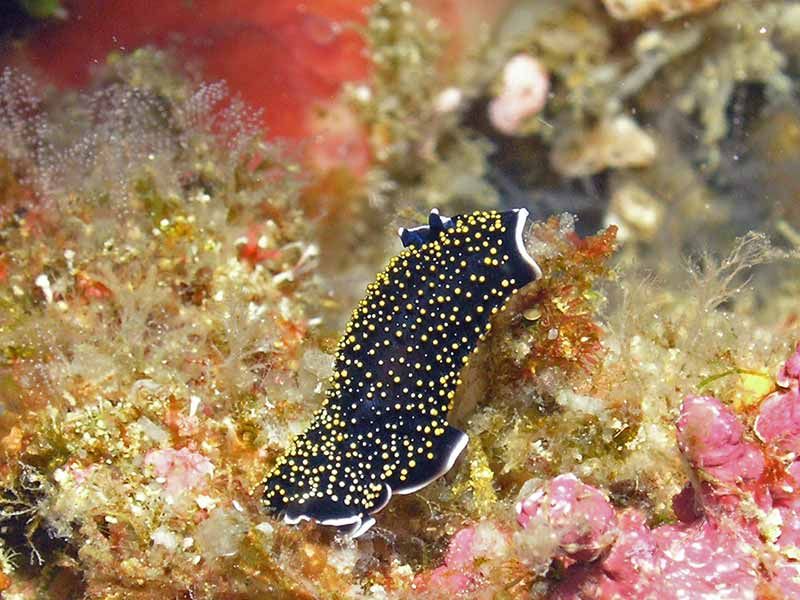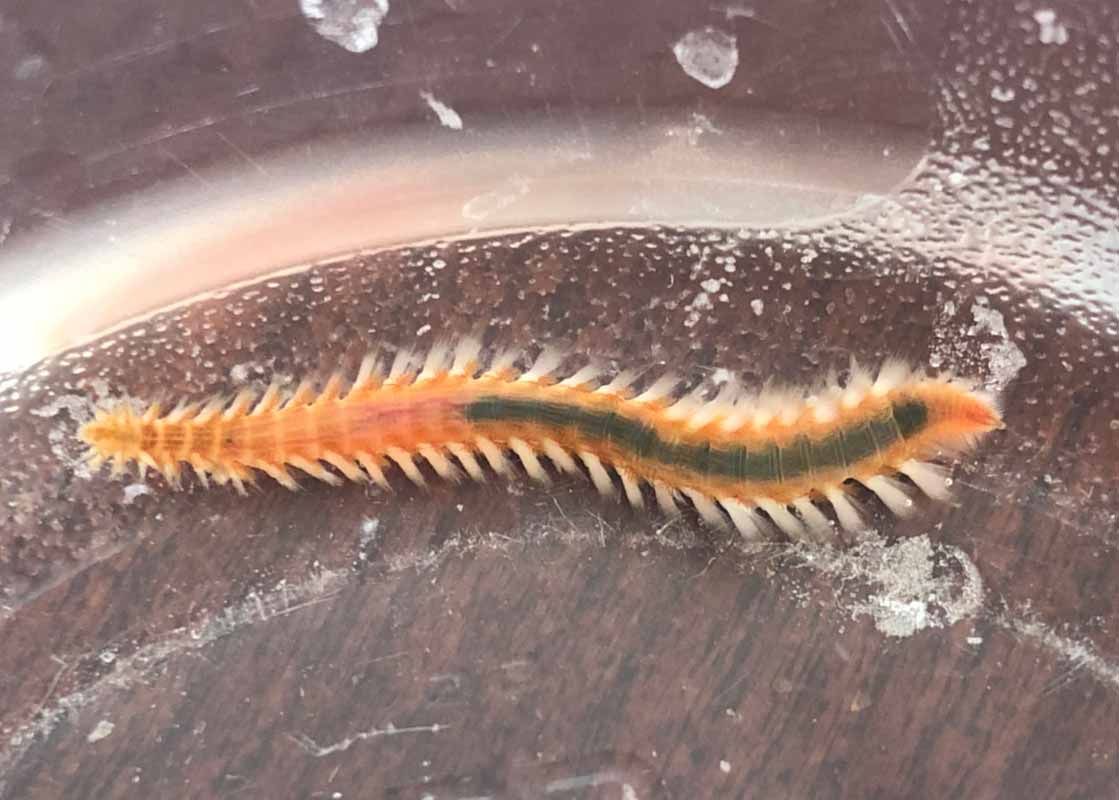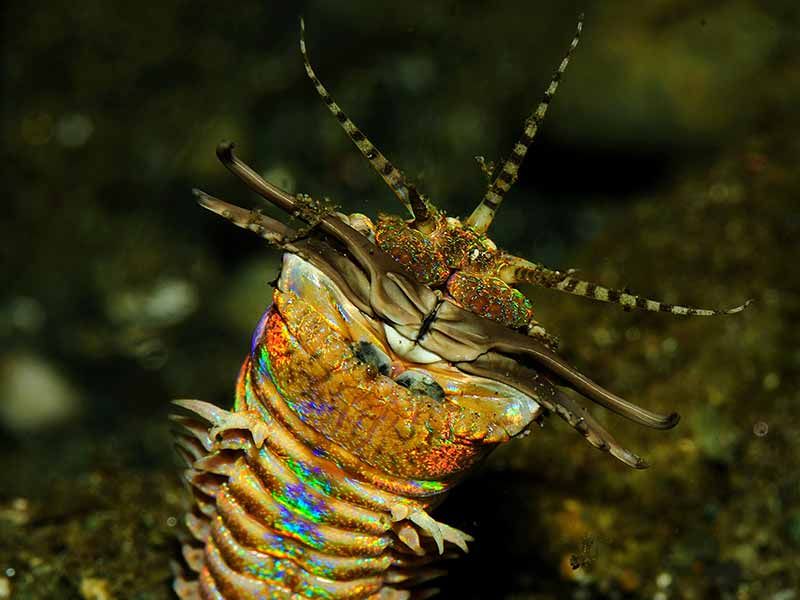Despite the negative connotation of the word “hitchhikers,” many of these tiny marine creatures can be beneficial to your aquarium’s biodiversity and cleanliness. In this post, we will cover the most common live rock hitchhikers and give you the scoop on the pros and cons of each.
What is live rock? The term “live rock” refers to the many diverse organisms already taking up residence on a piece of rock removed from the ocean or from an aquarium store reef tank. Live rock is good, as long as only the beneficial creatures are living on it.
Read on for how to differentiate the good ones from the bad ones and remove them when necessary. And keep in mind, the best way to prevent introducing any of these bad hitchhikers into your tank is to follow proper quarantining procedures rather than immediately adding newly purchased vivaria into your established tank.
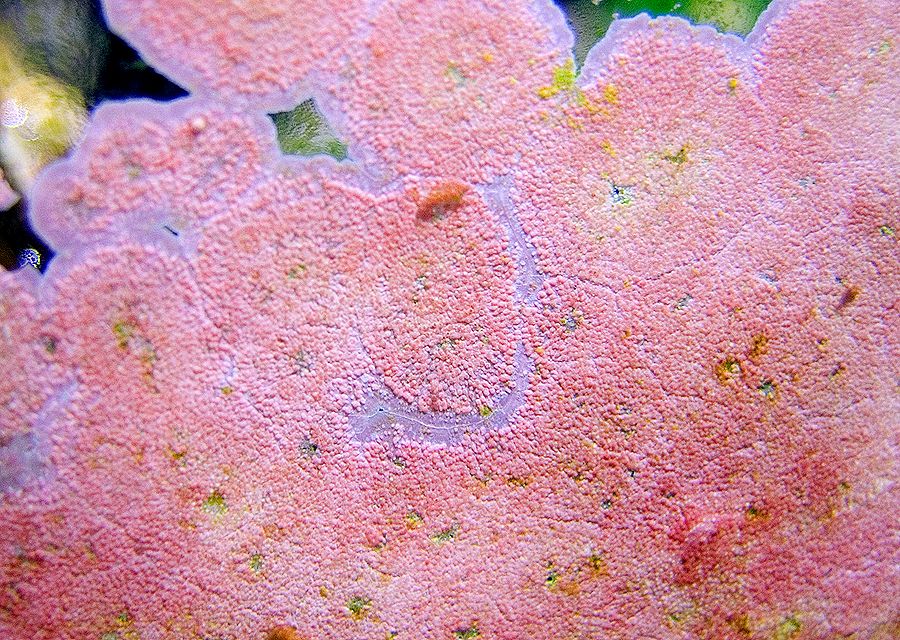
Coralline Algae
A dominant type of algae most commonly seen in red, pink, or purple, coralline algae also comes in green, blue, and even white.
Pros of Coralline Algae
In addition to being aesthetically pleasing, coralline algae are beneficial to reef tanks because of their tendency to subdue unhelpful algae such as green algae, mat algae, hair algae, and diatoms. Your saltwater aquarium is better off with this live rock hitchhiker present, so keep this one around.
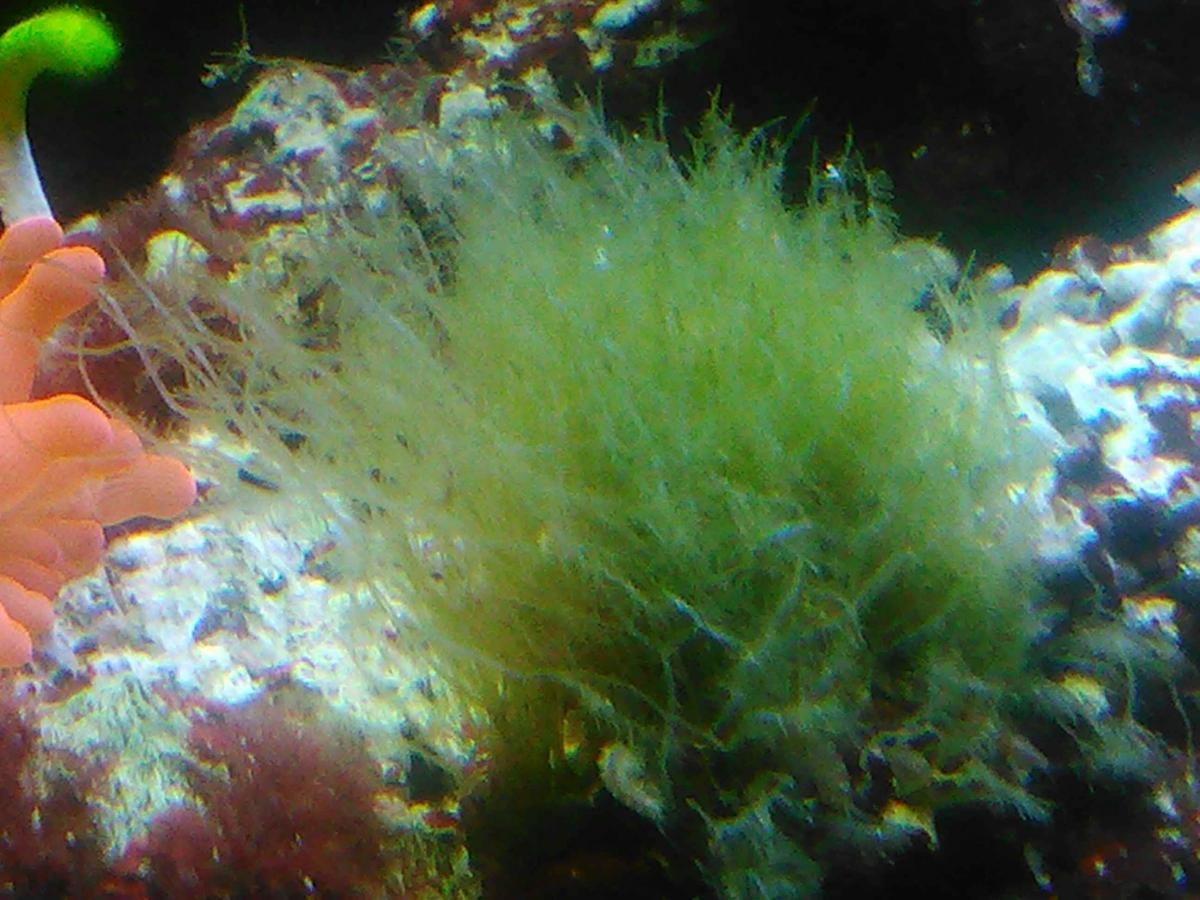
Hair Algae
Hair algae is a green, grassy mass that can quickly overtake an aquarium.
Cons of Hair Algae
This type of algae can be difficult to get rid of. It is a common live rock hitchhiker that grows too fast and too big to be beneficial to your tank. If left to its own devices, it will expand and fill a tank so thickly that it could block light from parts of your tank and even trap fish into a slow death.
How to Remove Hair Algae
- Manual removal. Pull clumps out of your tank. Carefully remove the parts that are attached to plants. Be gentle with those plants though. Their health will help fight future hair algae overgrowth.
- Water changes. Regular water changes will reduce the number of nutrients in the water for the algae to feed on.
- Water parameters. Alkaline water with a high pH is a desirable condition for algae. If you use soft water instead, algae will be less likely to grow.
- Plant choice. If you choose plants that grow well in a hard water environment, they will have the opportunity to take up as much surface area as possible before the algae can take over. Allowing these plants to flourish can also provide some shade that will block the algae’s access to sunlight.
- Algae eaters. There are many species of fish that can help eradicate or at least control this problem. We will also identify several live rock hitchhikers that can also be helpful in this area.
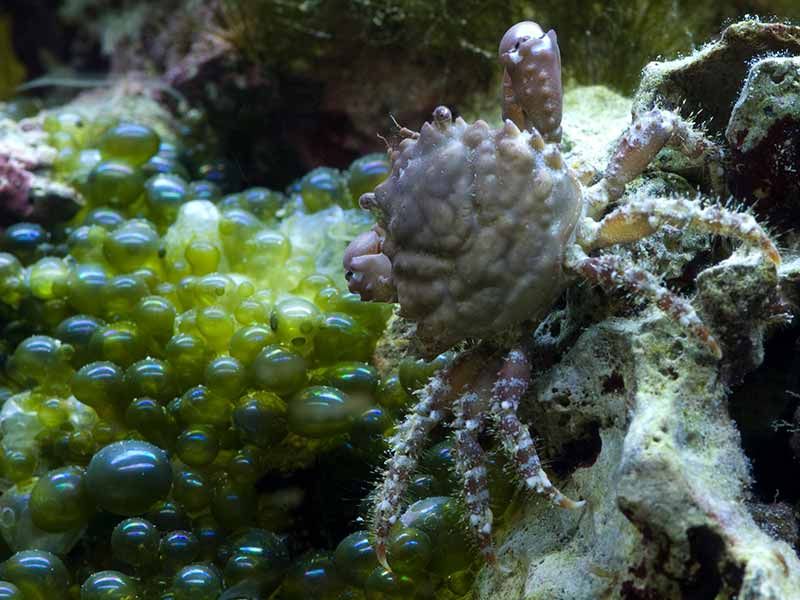
Bubble Algae
Bubble algae is a spherical species also famous for being one of the largest single-celled organisms. The interesting facts end there, though. This one can be a beast to deal with.
Cons of Bubble Algae
Since each bubble is a single-celled organism, they are able to reproduce quickly. And bursting them manually or introducing algae-eating creatures to help will only cause a faster spread.
How to Remove Bubble Algae
Manual removal is the best option. Even if you’d like to see a few of these interesting structures hanging around your tank eventually, if you have a younger setup and see a few appear, go ahead and get rid of them. It is likely that there are quite a few more that just haven’t appeared yet.
You should also encourage the growth of coralline algae. Once there is a healthy growth of coralline algae, it will help prevent the invasive growth of bubble algae.
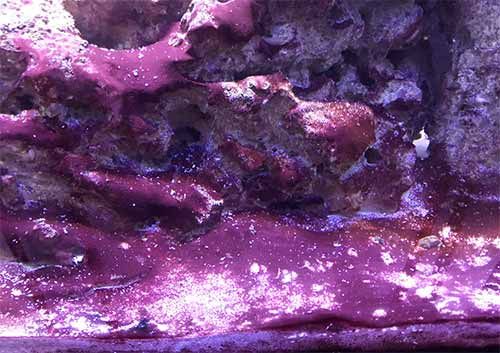
Cyanobacteria and Slime Molds
Often referred to as “slime algae” or “aquarium slime,” these are some ugly invaders you don’t want in your tank. They can come in a variety of colors from black to green to red.
Cons of Cyanobacteria and Slime Molds
Unappealing and fast-growing, they will reduce your tank’s aesthetic appeal and can cause other problems as well. They will cover up the beautiful things in your tank, block necessary light sources from reaching your plants, and can be difficult to eradicate once they set up shop.
How to Remove Cyanobacteria and Slime Molds
- Check your water parameters. High nitrate levels and high phosphate levels are happy growing conditions for these pests. Frequent water changes with low phosphate water will help reduce the undesired growth. Increasing the amount of water movement in your aquarium by adding pumps and airstones, and/or rearranging the tank so that more areas are exposed to water movement rather than sheltered from it.
- These parasites like light. Use LED bulbs if possible rather than fluorescent. LED bulbs don’t produce the kind of light that is helpful for the slime to grow. If you prefer using fluorescent bulbs, be sure to change them frequently, as their light quality degrades over time from a type that is more helpful to plants and good algae, to a type that is more helpful to slime.
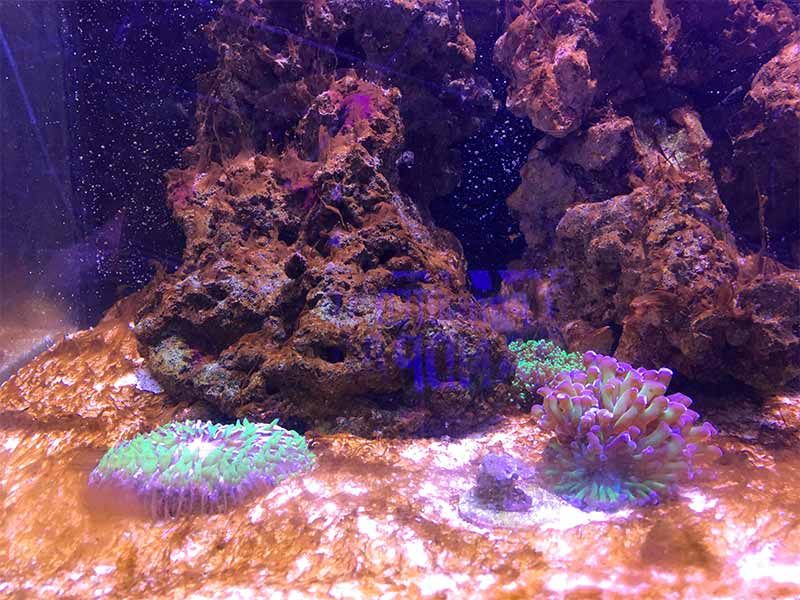
Dinoflagellates
Also referred to as “slime algae,” this little menace is not actually a true type of algae at all. And it’s not necessarily detrimental, but it can be.
Cons of Dinoflagellates
In a younger tank that hasn’t reached a good level of biodiversity yet, dinoflagellates will take advantage of all the available nutrients and overpopulate. And that isn’t a pretty sight.
How to Remove Dinoflagellates
Because dinoflagellates are so capable of thriving in low-nutrient environments, it is best not to perform a water change, but instead to use a filter sock to scoop out as much of the offending slime as you can. Adjusting the pH of your tank, adding more nutrients to the water, and reducing the tank’s exposure to UV lights can also help manage, if not eradicate, these pests.
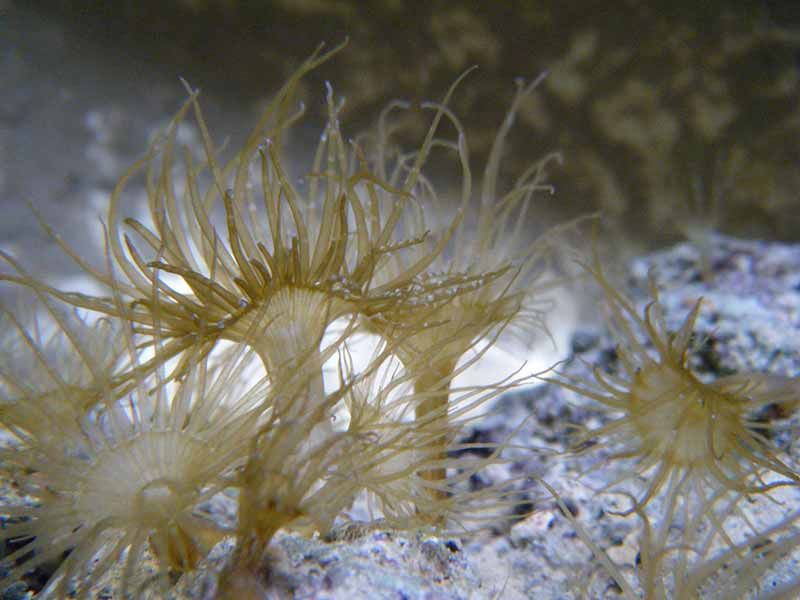
Aiptasia or Glass Anemone
These anemones are not technically hazardous, but there are a few reasons why you probably don’t want them in your tank.
Cons of Aiptasia/Glass Anemones
While they won’t try to eat your fish, they can inflict a painful sting and will snag bits of the food intended for them. And it doesn’t take much of that before they start reproducing like rabbits and growing on every surface. They use up resources intended for your fish and other tank members, and so are best avoided.
How to Remove Aiptasia/Glass Anemones
There are various chemical methods for removing these pests, including injecting them with lime juice or lemon water. But these acidic solutions will alter the water quality of your tanks and can be risky.
Another option is to attempt to control the population, rather than eradicate it, by introducing natural anemone predators. Butterflyfish, filefish, and pufferfish have all been known to snack on troublesome anemones and should be considered for the job.
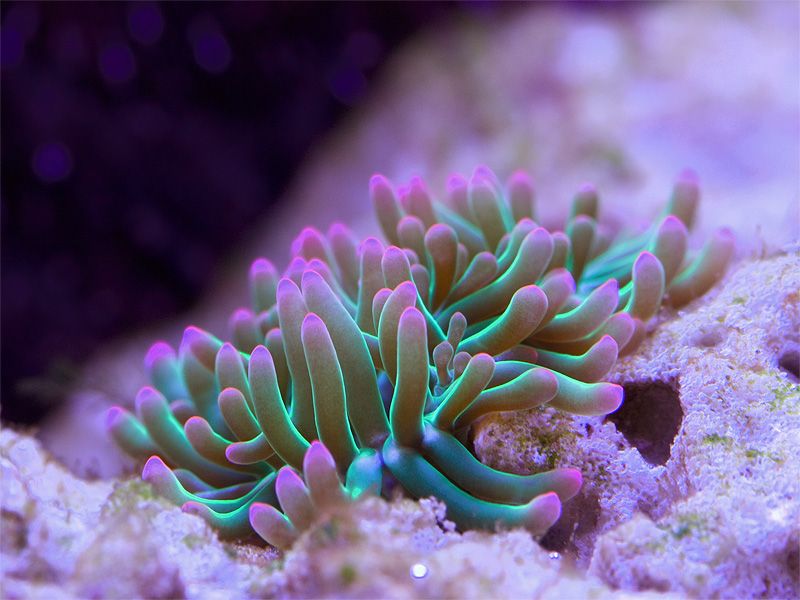
Majano Anemone
With its thick, green fingers, this anemone has a unique appearance. But unfortunately, it is also a bad hitchhiker.
Cons of Majano Anemone
Majano anemone can sting and reproduce at an unfortunately high rate, which can be detrimental to your fish.
How to Remove Majano Anemone
These troublesome anemones can be kept in check by peppermint shrimp, or by manually scraping them off of rock surfaces. It is most beneficial to let the rock dry and cover the affected area with epoxy or glue to prevent regrowth.
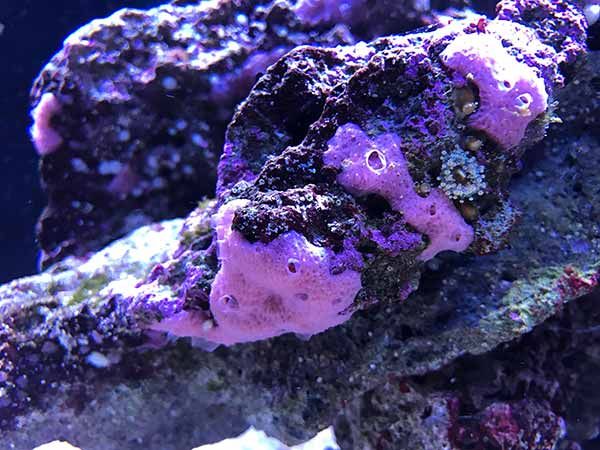
Marine Sponges
Marine sponges can be beneficial to your reef aquarium, but can sometimes disappear when lacking the right nutrients to thrive.
Pros of Marine Sponges
These live rock hitchhikers are filter feeders, which means they help keep your tank clean and balanced. They also add a certain unique charm to the landscape with their various unusual shapes.
Cons of Marine Sponges
But the dark side of these organisms is that some of them carry toxins that can be damaging to coral.
How to Remove Marine Sponges
If your sponges are overtaking your coral, or if you simply aren’t a fan of their appearance, you can use any of these methods to get rid of them:
- Expose the rock to air and let it dry out. The sponge will likely dry out and die before long.
- Scrape the sponge off of the rock or other surface. This is a good idea to do even if you’ve let it dry out because it is possible for some moist buds to survive and wait for their chance to make a comeback.
- Cover the affected areas of the rock in reef glue or epoxy. If you choose this option, please be sure to purchase a product specifically for use in a saltwater aquarium to avoid introducing toxic chemicals into your tank.
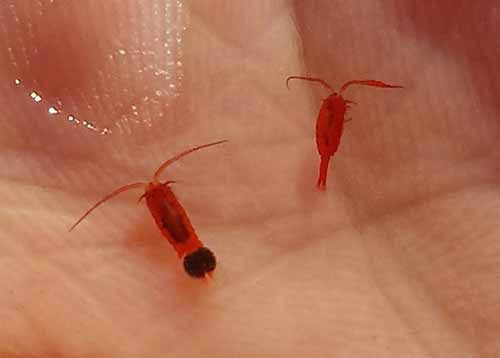
Copepods, Isopods, and Amphipods
These little prehistoric-bug-looking live rock hitchhikers are massively beneficial to your tank.
Pros of Copepods, Isopods, and Amphipods
These creatures cause no harm and make a great self-replenishing food source for your fish and some corals. Keep them around.
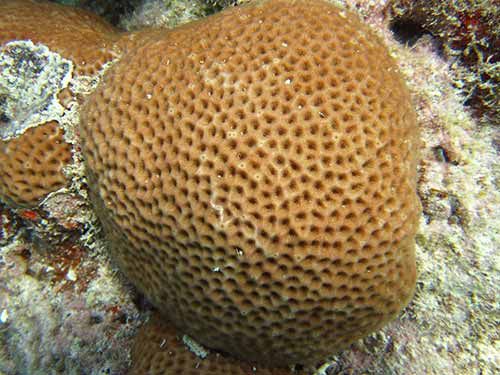
Starlet Coral
Usually pale to light brown, or occasionally rose-colored, this coral grows either as a flat plate or a rounded dome. It is aesthetically pleasing and causes no harm to the other aquarium dwellers.
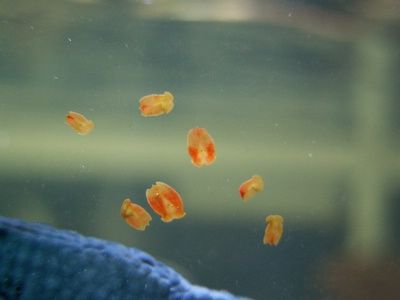
Red Planaria Flatworm
These vaguely-stingray-shaped little critters can be dangerous for your coral and are even more problematic dead than alive.
Cons of Red Planaria Flatworms
While they are not interested in consuming coral, they will grow so numerous as to smother the coral to death. And worse still, they release a toxin when they die that can wipe out a reef tank if present in too high a concentration. Your reef aquarium is better off without these pests.
How to Remove Red Planaria Flatworms
For smaller reef aquariums with easy-to-remove rocks, each rock may be removed and placed in a container full of a dipping solution. Instructions on these dipping solutions will recommend the best length of time for soaking.
This method will kill any red planaria flatworms present, but will also be the end of many other critters and can be harsh on coral. Be sure to research which dipping solution will be best for your tank.
A siphon can also be used to scrape and suck these pests from the environment. You can purchase a siphon online or make your own. But even siphoning won’t be a long-term fix, because there are lots of tiny crevices these creatures can hide in that the siphon can’t reach.
Another removal option is to install some natural predators, though these can come with their own downsides. The blue velvet nudibranch is a flatworm’s worst nightmare and could be the answer to your prayers. But typically multiple individuals are required, and they can be expensive ($20-$30 each) and tend not to live more than a few weeks.
Blue Sapphire Damselfish are small, pretty, and peaceful consumers of flatworms, but they will only eat them when they are loosely floating around in the water. Their usefulness is dependant on how often you are able to scrape or shake flatworms free from surfaces.
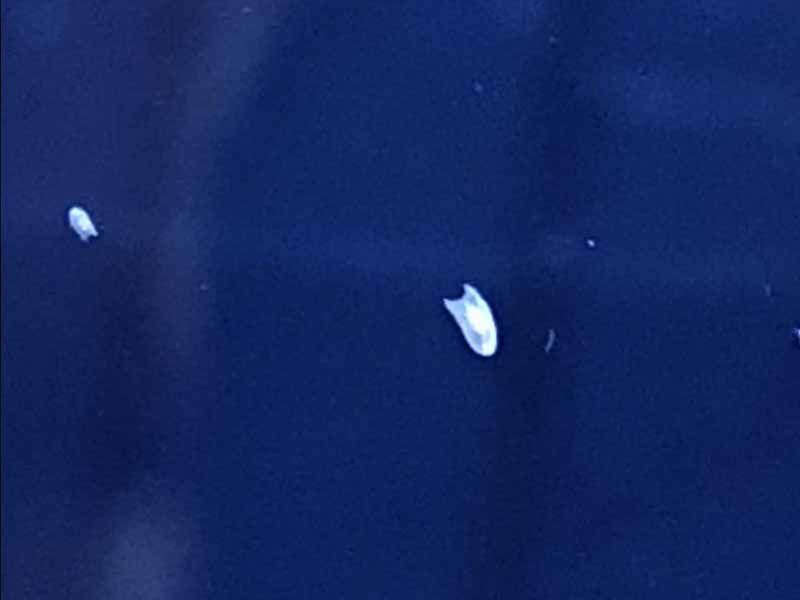
Ghost Flatworm
Ghost flatworms are neutral hitchhikers. They may eat some pods, but they mostly mind their own business and don’t cause any problems.
Polyclad Flatworm
These long, speckled flatworms are not a welcome species in your saltwater aquarium.
Cons of Polyclad Flatworms
Due to their natural diet consisting of clams and coral, depending on the subspecies, polyclad flatworms should be removed from your tank environment.
How to Remove Polyclad Flatworms
Dipping rocks from their environment into a dipping solution, manual removal with a siphon, or introduction of a predatory species will help reduce and hopefully eliminate the population.
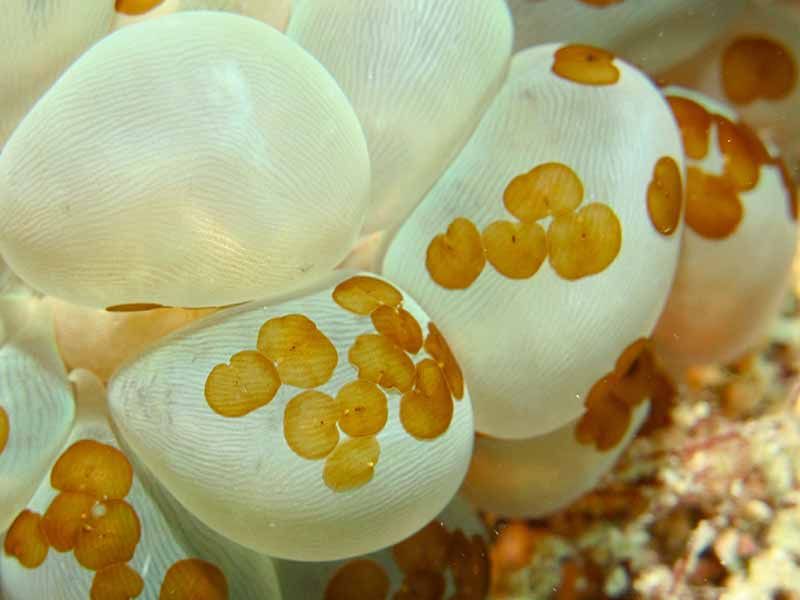
Pumpkin Flatworm
True to their name, pumpkin flatworms resemble a crosssection of a pumpkin and are the same orange color. But these are another example of a bad hitchhiker species.
Cons of Pumpkin Flatworms
These creatures will smother and kill certain species of coral, which will reduce the aesthetic value of your saltwater aquarium and interfere with the biological balance in your tank.
How to remove Pumpkin Flatworms
Pumpkin flatworms can be removed via the dipping method, the siphoning method, or by introducing natural predators into the tank.
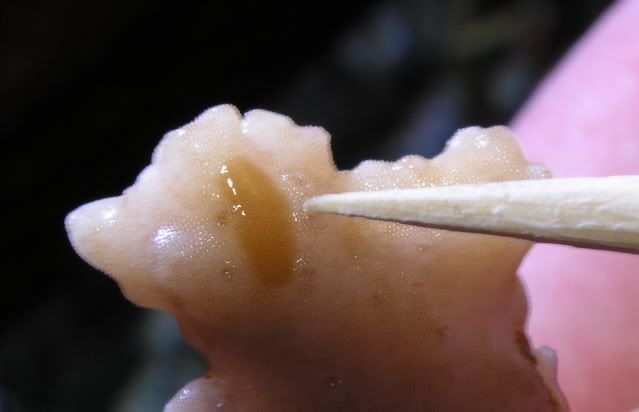
Acropora Eating Flatworm
As its name implies, this flatworm will consume your beautiful stony corals.
How to Remove Acropora Eating Flatworms
The dipping method helps reduce the presence of these worms, as well as the siphoning method and adding natural predators to the tank.
Bristle Worms
One of the most common live rock hitchhikers, these little critters get their name from the tiny bundles of sensory hairs on either side of their bodies, which are interspersed with detachable defense bristles and gill filaments. These worms can be either good or bad depending on their numbers.
Pros of Bristle Worms
They make great members of the natural clean-up crew by eating leftover bits of fish food as well as fish excrement.
Cons of Bristle Worms
But they can become overwhelming to a reef tank if they have too much food available to them and take the opportunity to over breed. Their little bristles are also quite pointy and can cause irritation or even an allergic reaction in some individuals. These worms are best kept in small numbers.
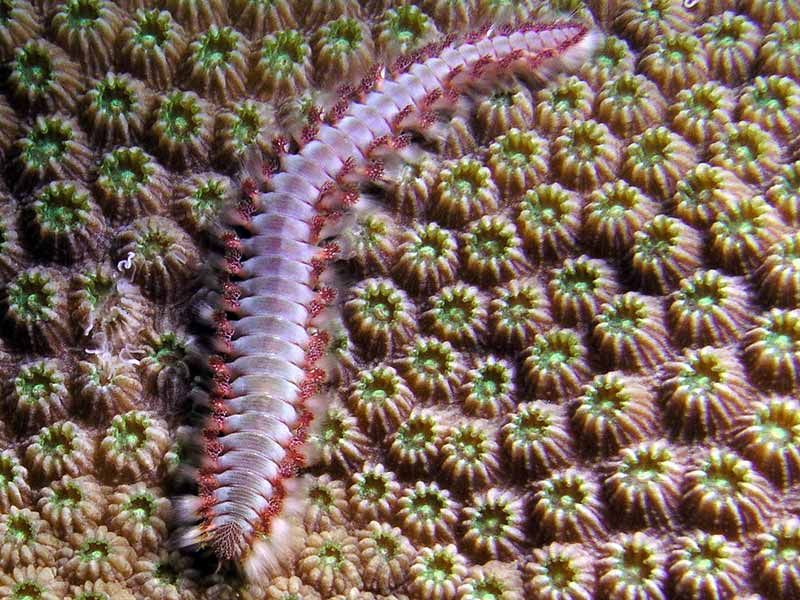
Fire Worms
Fire worms are a type of bristle worm. But these worms are bad hitchhikers.
Cons of Fire Worms
The detachable defense bristles belonging to these worms are ten times as toxic as those of common bristle worms. These bristles can cause a great deal of discomfort to you or your other aquarium critters if you are unfortunate enough to scare a fire worm into shooting them at you.
Bobbit Worms
These guys look like something out of a horror movie. And they live up to their appearance: they are very bad hitchhikers.
Cons of Bobbit Worms
Bobbit Worms grow large enough to prey upon your aquarium fish, and they can give you a pretty good bite, too, with that nasty set of pinchers they have in front.
How to Remove Bobbit Worms
The safest way to remove these dangerous pests is to get rid of the entire rock that the little villain is hiding in. Better to lose a nice rock than to see your aquarium fish injured or murdered by these creatures.
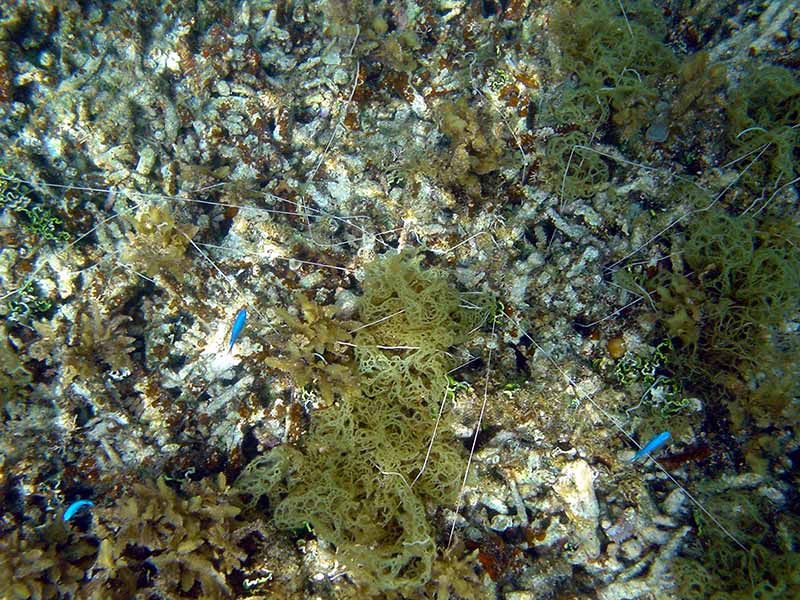
Spaghetti Worm
These noodle-legged little guys just want to mind their own business.
Pros of Spaghetti worms
Spaghetti worms make their home in the sand beds of aquariums and feed on the detritus materials you don’t want in your tank. These guys are invaluable members of the clean-up crew. Leave them alone to do their thing.
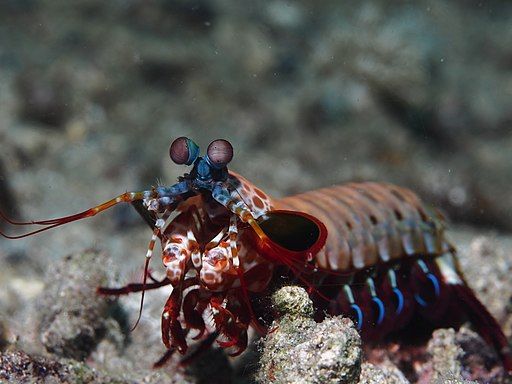
Mantis Shrimp
Mantis shrimp come in a variety of colors from rainbow to plain old brown, and they can be anywhere from one inch to twelve inches long. With their mantis-like bulbous eyes and strong, grasping front appendages, it’s no wonder how they got their name.
Pros of Mantis Shrimp
Thanks to their beautiful array of colors and intriguing eyes and pincers, they can be a highly aesthetic feature to any saltwater reef tank.
Cons of Mantis Shrimp
Unfortunately, due to their strength and predatory nature, they do not make a good addition to a reef tank stocked with fish, as they will harass and consume any that come close enough. It’s best to remove these critters to their own aquarium where they won’t be a danger to your saltwater aquarium fish.
How to Remove Mantis Shrimp
Mantis shrimp can be scooped with a net or small container and replaced in a different aquarium. But watch your fingers, because they’ve been known to leave scars on humans with their mantis-like appendages.
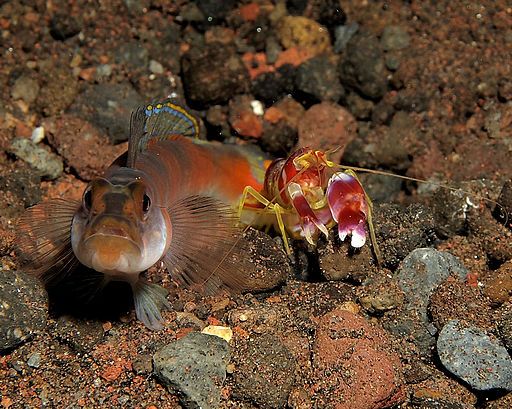
Pistol Shrimp
Pistol shrimp are one of the most unique species of live rock hitchhikers because they tend to live in a symbiotic relationship with goby fish. This means that while the pistol shrimp digs the borrow in the sand, the goby keeps a lookout for predators. They are often sold together in pairs.
Pros of Pistol Shrimp
In addition to being friends with gobies, these shrimp are also very small. They don’t grow past two inches, and so aren’t able to cause harm to most reef fish.
Cons of Pistol Shrimp
Pistol shrimp owe their name to their large front claws that make a loud snapping noise when used. Their claws are so strong that they have a reputation for being heard more than seen, and have even been known to perforate hard crustacean shells. Even so, due to their small size, they are unlikely to pose a significant threat to your tank.
How to Remove Pistol Shrimp
Pistol shrimp are highly evasive and very small, so the most effective option is to use a commercial fish trap.
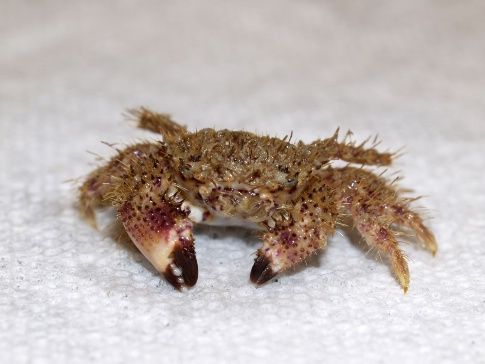
Gorilla Crab
A hairy, speckled crab with dark-tipped pincers, these guys will only cause problems for your reef tank.
Cons of Gorilla Crabs
They start out small, but even then, they are predatory animals and will feed on your invertebrates and shrimp. They can eventually grow large enough to be a danger to your fish.
How to Remove Gorilla Crabs
The best way to rid your tank of these crabs is manually. You can use forceps, a net, or a container you can scoop a crab up with. Be careful to keep your fingers out of pinching range. Successful removal may require you to move some of your rocks around as they will dart underneath anything they can find to avoid capture.
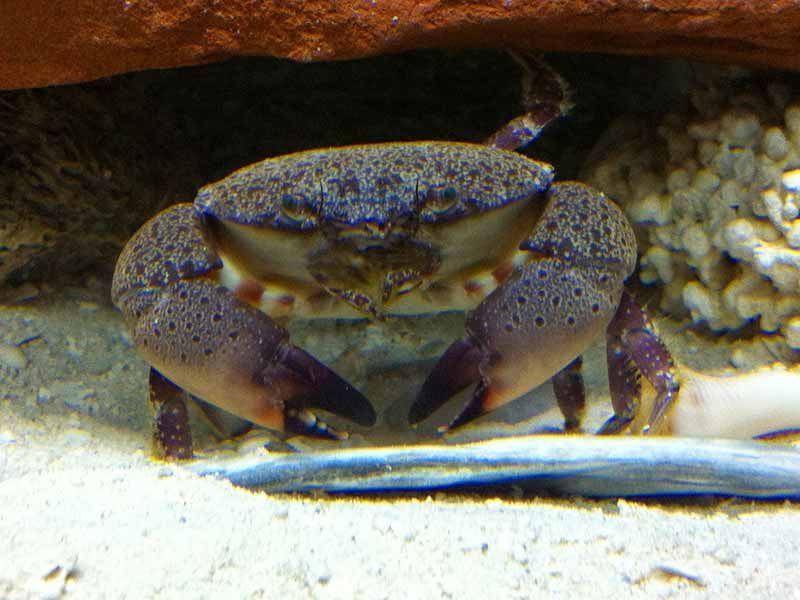
Stone Crabs
Lacking the pokey hairs of a gorilla crab, stone crabs have a smoother carapace (the top part of its body) and fewer, larger dots.
Cons of Stone Crabs
Like gorilla crabs, stone crabs start small and only get bigger and more dangerous to more members of your tank community as time goes on. It’s best to remove these ones.
How to Remove Stone Crabs
Stone crabs are best removed manually or with a fish trap. Tweezers, a net, or a scooping container will likely do the trick. Most crabs are susceptible to being tempted out of hiding with a piece of meat.
The vast majority of other crabs will be similarly hazardous to your reef tank.
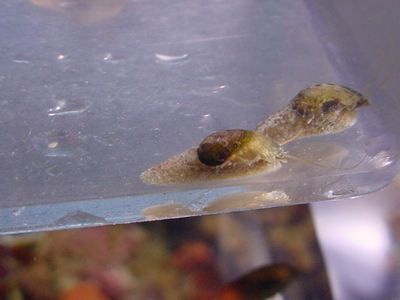
Stomatella Snail
Stomatella snails are tiny little guys who resemble slugs more than regular snails. And they have wildly long antennae.
Pros of Stomatella Snails
These little critters love to eat algae. And they don’t cause any problems while they’re at it. Welcome them to the clean-up crew in your saltwater tank.
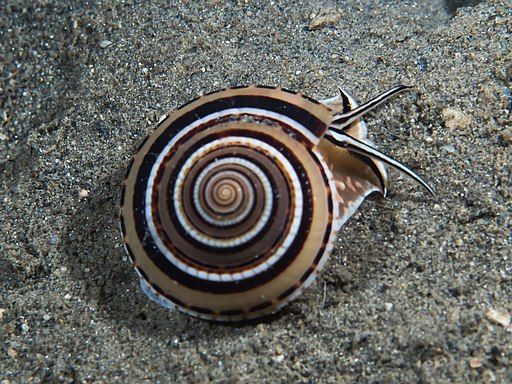
Sundial Snail
While their black-and-white shells are beautiful to behold, you don’t want these snails in your tank.
Cons of Sundial Snails
Unfortunately, sundial snails enjoy feeding on zoanthids, the beautiful, colonizing soft corals you want to keep in your tank. So it’s best to remove these snails before they can wreak too much havoc on your tank.
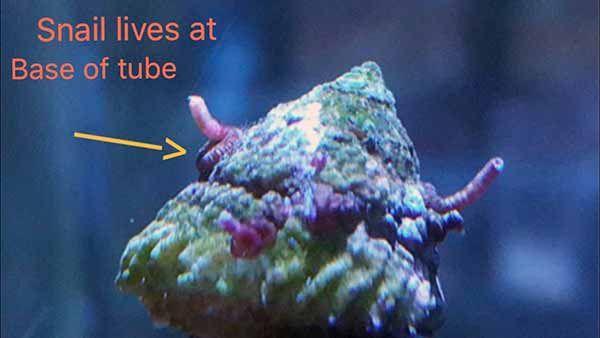
Vermatid Snail
Vermatid snails are strange little aliens who instead of residing in a typical shell, build a calcified tube-like structure to dwell in. And they aren’t aesthetically pleasing.
Cons of Vermatid Snails
While these snails don’t actually feed on coral, they will set up shop right up in the coral’s personal space. This invasion can stunt coral growth. Additionally, when vermatid snails cast out mucous nets for feeding, the mucoid material can cause significant irritation to coral.
Removal of Vermatid Snails
The best strategy for eradicating these little pests is manual removal. Pull that sucker off, or use coral cutters if necessary to remove it from your reef rock.
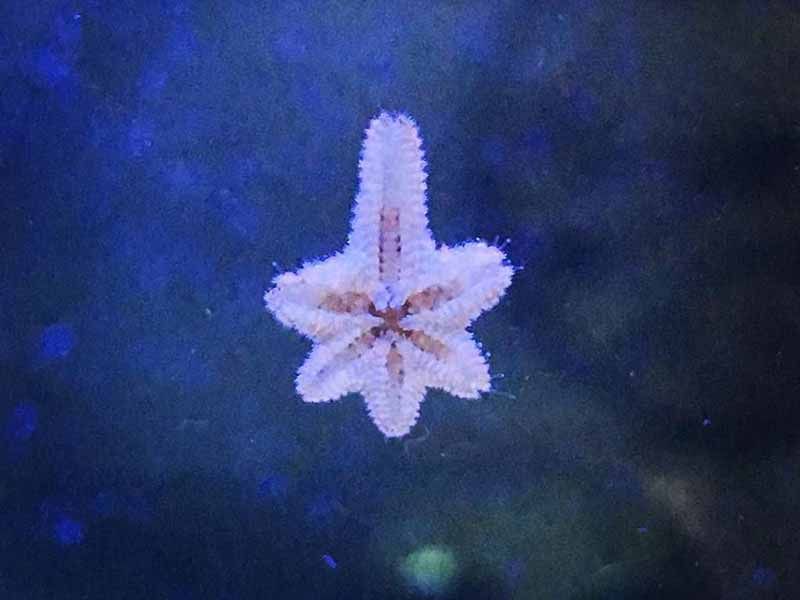
Asterina Starfish
Asterina starfish are extremely small, grey in color, and generally harmless. These little sea stars are helpful members of the clean-up crew…until there are suddenly way too many in your tank.
Cons of Asterina Starfish
Asterina starfish are fine in moderation, but once they begin to overpopulate, they tend to develop an unhealthy interest in feeding on all your coral polyps. It’s normal to have a few hanging around in your tank, but once you notice a spike in numbers, it’s best to remove the excess starfish before a colony explosion can reach that point.
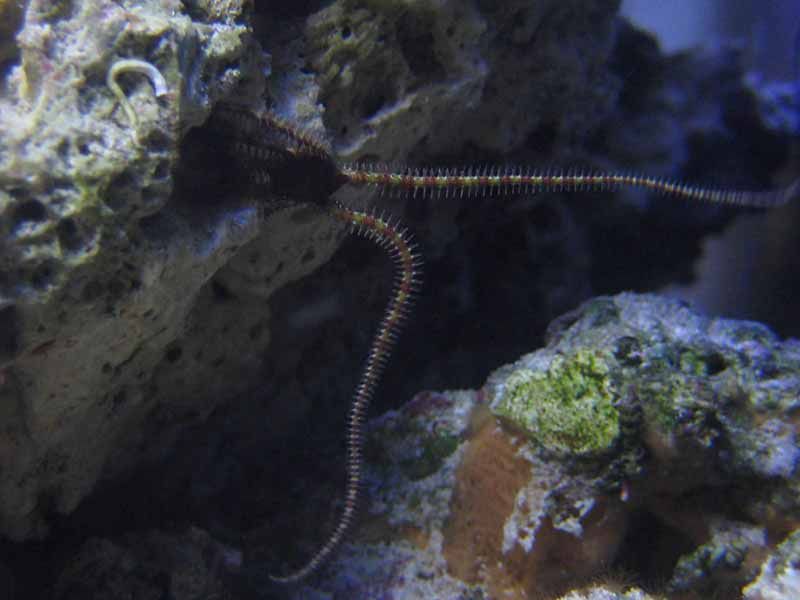
Brittle Starfish
Like the Asterina starfish, these sea stars are welcome to a point.
Cons of Brittle Starfish
Most species are quite small, but a few can grow big enough to feed on tank members you would rather they leave alone. Keep an eye on their size and manually remove the ones who get too big.
Final thoughts
Some of these hitchhikers can be very useful members of your cleanup crew so don’t be too quick to get rid of them. Others are going to require dedication and determination to permanently eradicate.
No matter whether they’re harmful or beneficial, you need to be able to identify these rogue hitchhickers. Hopefully this informative guide has given you the data you need to help you identify what’s lurking within your rocks and crevices.
Best of luck to you as you identify and handle each of your live rock hitchhikers!
